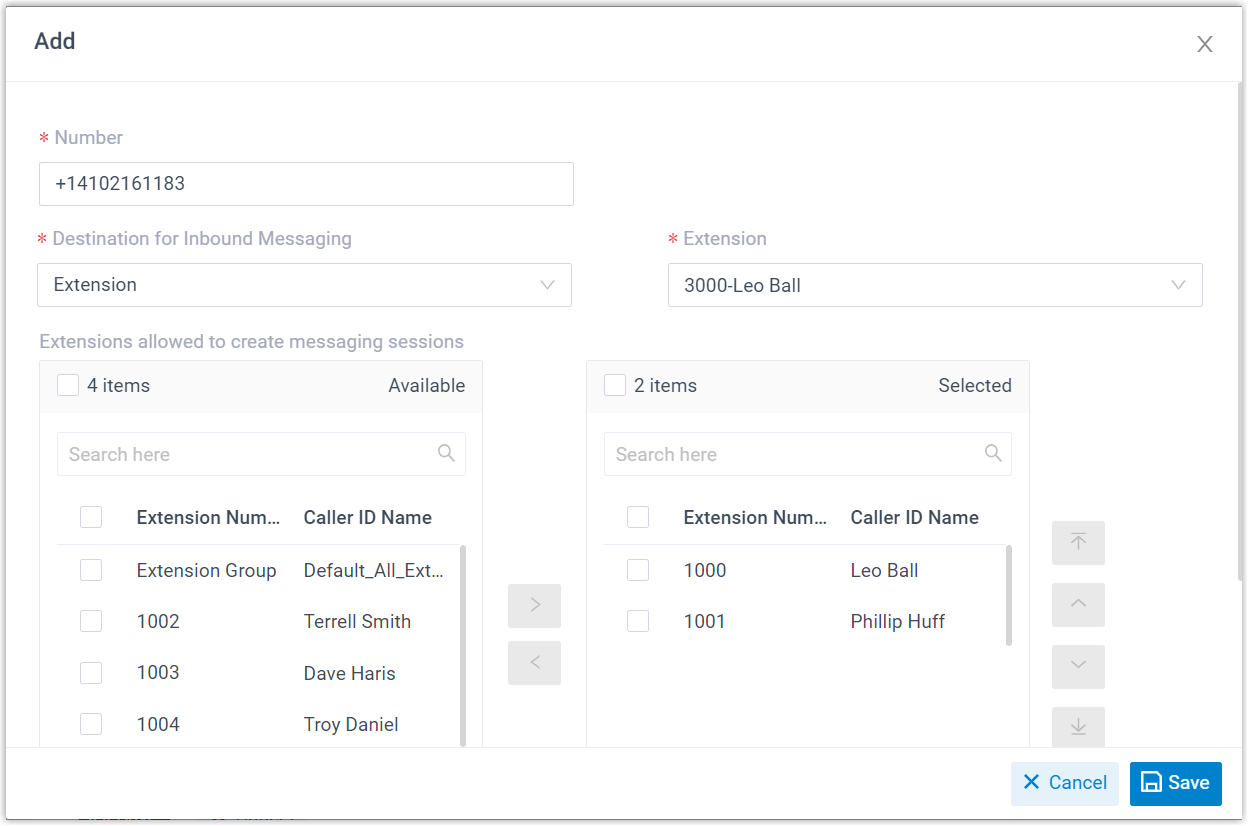Set up an SMS Channel for VoIP.ms
This topic describes how to set up a VoIP.ms SMS channel on Yeastar P-Series Cloud Edition, so that agents in your business can receive and reply to SMS messages from customers on their Linkus UC Clients.
Requirements
The Yeastar PBX should meet the following requirements:
- Firmware: Version 84.14.0.24 or later
- Plan: Enterprise Plan (EP) or Ultimate Plan (UP)
- Domain Name: Due to the limitation of the third-party platform, the domain name must NOT contain underscore character(s), otherwise the messaging channel will encounter authentication failure, or will fail to receive messages.
- Domain Certificate: A valid domain
certificate is installed.Note: If the root domain of your Cloud PBX is NOT the standard Yeastar-provided domains (ycmcloud.com, yeastarcloud.com, or yeastarycm.co.za), you NEED to install a valid domain certificate for the PBX first, otherwise the messaging channel will encounter authentication failure, or will fail to receive messages.
Supported message types and limits
- Supported message types
- The supported message types are determined by VoIP.ms.Important: When sending multimedia messages (such as images), the SMS service provider downloads the files from a link provided by the PBX. Therefore, if you have set Allowed Country/Region IP Access Protection rule, make sure that you have allowed the IP access from the country where the SMS service provider is located, otherwise the file transmission would fail.
- Limits
-
- File size: Max. 100 MB
- File retention period: 24 hours
Prerequisites
- API address for verifying authentication
- API address for sending messages
- Message sending rate limit
- API key and Secret for the messaging channel integration
- Phone number used for message sending and receivingNote: If business needs to communicate with US-based customers, make sure that the phone number has been completed with 10DLC registration to avoid disruption in message delivery.
Procedure
- Log in to PBX web portal, go to .
- Click Add, and select SMS.
- In the Authentication tab, complete the following
settings.

- Name: Enter a name to help you identify the channel.
- ITSP: Select VoIP.ms.
- API Key: Enter the API key provided by VoIP.ms.
- Secret: Enter the Secret provided by VoIP.ms.
- API Address for Sending Messages: Enter
the corresponding API address provided by VoIP.ms. For example,
https://voip.ms/sendmessage. - API Address for Verifying Authentication:
Enter the corresponding API address provided by VoIP.ms. For
example,
https://voip.ms/verify. - Webhook URL: Copy the webhook URL and
paste it in the customer portal of VoIP.ms.Note: For the detailed introduction of webhook settings on VoIP.ms, contact the service provider.
- In the Messaging Settings tab,
configure the channel.
- In the Message Sending Rate drop-down
list, specify the number of messages that PBX can send per
second.Note:
- If the number of messages to send exceeds the set value, PBX will arrange the messages in queue and send them at the sending rate.
- If the sending rate set in PBX exceeds the limit set by the SMS service provider, it may result in message delivery failures. Contact your SMS service provider to confirm the sending rate limit of your account and increase the limit as needed.
- Optional: If you want the system to automatically close
the sessions that have been inactive for a specific period of
time, select the checkbox of Close Session
Automatically, then set the timeout in the
Session Timeout (Days)
field.

- In the Number section, click
Add to add a message routing
rule.

- Number: Enter the purchased
number in E.164 format (
[+][country code][phone number]). For example,+14102161183. - Destination for Inbound
Messaging: Specify the destination of
inbound messages from the number.
Option Description Extension If selected, choose an extension from the Extension drop-down list. Only the extension user can receive inbound messages from the number.
Message Queue If selected, choose a queue from the Message Queue drop-down list. All the agents in the selected message queue can receive inbound message(s) of new sessions in the queue. However, only the user who picks up a session will be able to receive and respond to the follow-up inbound messages in the session.
- Extensions allowed to create messaging sessions: Select the extensions that are allowed to initiate a messaging session with customers.
- Number: Enter the purchased
number in E.164 format (
- Click Save.
- In the Message Sending Rate drop-down
list, specify the number of messages that PBX can send per
second.
- Click Save.
Result
- A messaging channel is created successfully. You can see the channel
displayed in the Messaging Channel list with Status
showing
 .
.
- PBX automatically tracks and records the number of messages sent
and received on the channel, where the Total column
indicates the total number of sent messages, including both successfully
sent messages and failed ones.Note:
- For sent messages, PBX only tracks the number of the messages sent from agents' Linkus UC Clients. If you want to calculate the actual cost of sent messages, consult with the SMS service provider for the precise number of messages transmitted, as long text messages (longer than 160 characters) are automatically split into segments and then re-assembled when they are received, increasing the number of sent messages.
- You can filter the statistics by a time period using the time filter.

What to do next
Send text messages to the phone number and see if the specified agent can receive messages on his or her Linkus UC Client.